Common DC motors are specified to operate with voltages between 1.5 V and 12 V and their currents can vary between 50 mA and 1 A.
For an idea of the strength of a small motor, we can measure its current using a common multimeter at the highest current range, at least 200 mA, as shown in Figure 1.
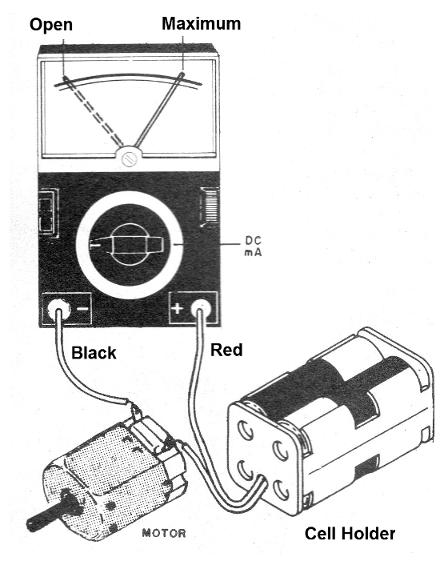
By letting the motor rotate freely, we have the current without load or "opened" and holding the shaft, but so that it still rotates with a certain effort, we have the current under load.
The maximum current under load, shown in Figure 2, gives us an idea of ??the force of the motor in application.
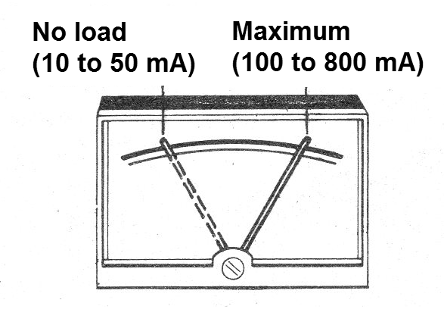
This current determines the type of power we should use on a design, whether small, medium or large alkaline batteries or even just one battery.
A motor with a maximum current of 200 mA can be powered by small batteries.
For a current of 400 mA we should use a medium battery and more than 600 mA up to 800 mA, large batteries.
Above this we must use a larger capacity battery.
We can change the direction of rotation with a simple key of 2-pole x 2-way or reversible, as we have already seen in several articles.
This can be done easily, according to the circuit of Figure 3.
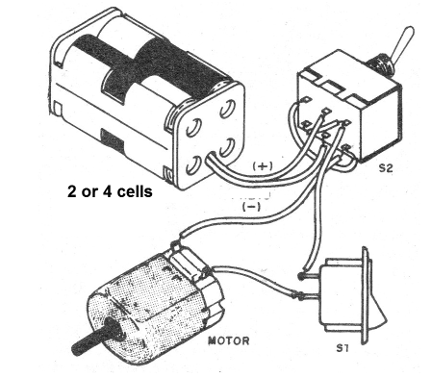
The switch is used to trigger.
One possibility for changing the speed is shown in Figure 4 where we have a resistance reducer.
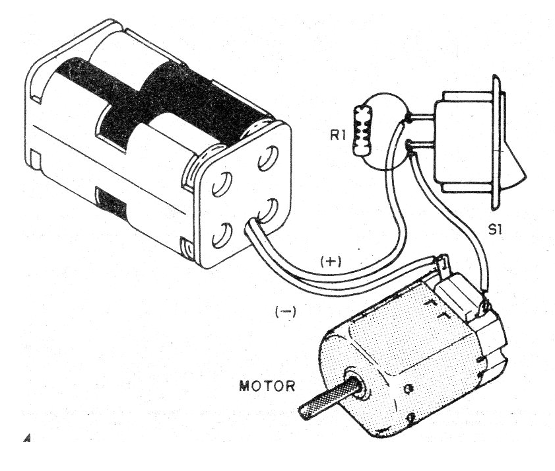
With S1 closed the direct current and the motor has its maximum speed.
With S1 open, the resistor in series with the circuit and current is smaller, reducing the speed.
Resistors from 4.7 ohm to 22 ohm x 2 W can be used.
The exact value of the resistor depends on the motor current and must be obtained experimentally.
Figure 5 has a way of controlling an engine speed electronically through an electronic rheostat.
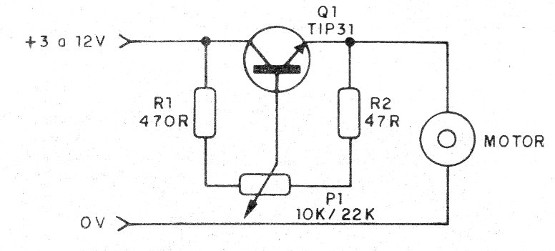
With the indicated transistor, motors up to 2 A can be controlled.
The assembly of this circuit on a small terminal strip is shown in Figure 6.
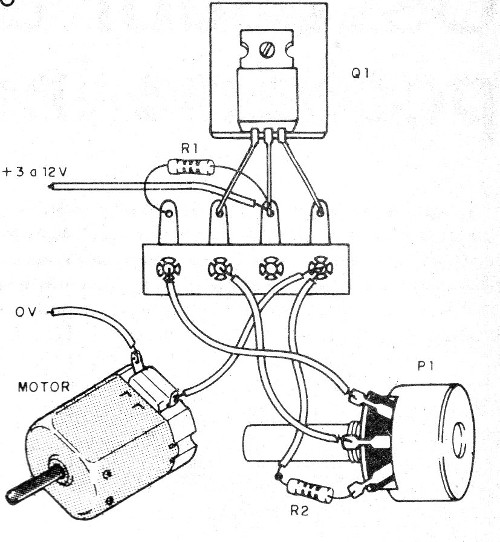
An important note about small motors is that they are usually specified to operate within a range of voltages.
Thus, small motors drawn from 4-cell (6 V) appliances work well at voltages of 3 to 8 or 9 V.
We should only observe so that with higher voltages they do not get heated by an overload.



